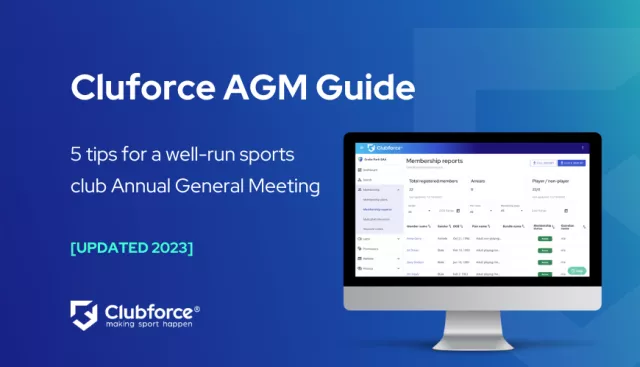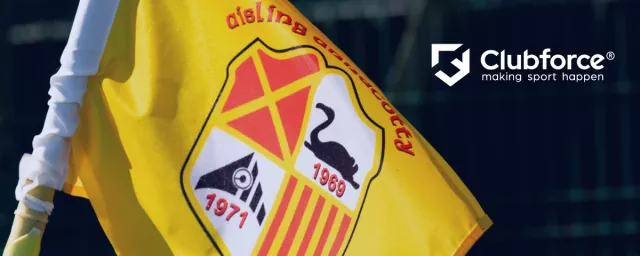
Registration season is just around the corner for many sports clubs across the length and breadth of the country and as we approach the end of the year, many of these clubs are preparing for their Annual General Meeting (AGM). A well-run AGM will report the club’s membership base on the previous year’s activities of the club, allow for the election of the new board or committee members for the year ahead, and other business relating to the successful running of the club in accordance with the Governing Bodies rules.
Here are five steps to running a successful AGM for your sports club which may be useful to your club whether it’s football (soccer), Gaelic games, rugby, cricket, hockey, basketball, or any other sport.
1. Announcement of AGM
Generally, AGM’s should be announced to members one month in advance with details of the proposed date, time and venue of the meeting. Some National Governing Bodies have this as an absolute requirement within their rules and it’s worth consulting your club constitution to ensure that your club’s AGM is called in line with club rules. The venue for the AGM will vary depending on the size of the club, but there should be adequate space to allow all for a broad general attendance of the membership.
The club secretary is usually responsible for announcing the AGM and this announcement can be distributed to members in writing, via email and using other available means of communication such as social media, club communications apps and physical posters in the premises of local businesses and sponsors.
2. Preparing Reports
The outgoing board or committee are responsible for the organisation of the AGM and the reporting on the current year’s performance in terms of finances and membership activity. Collating this kind of information into a presentable format can be a time-consuming effort, so give plenty of time in advance of the meeting to prepare and review the reports. Using the real-time reporting function of a system like Clubforce makes this an easy task – all financial data is available to club administrators in a visual format at the click of a button and can be easily shared with attendees at the AGM. This financial report, known as the Secretary’s Report, looks at financial data for the club across a three-year window, allowing for quick comparison to determine whether the club is performing better or worse than previous years.
3. Sticking to the Agenda
In their guide on running effective meetings, the GAA identifies the agenda as “a key part of the planning process for a meeting”. Documenting and distributing the agenda is the first step to ensuring the meeting doesn’t get derailed – this can often happen where a discussion over a contentious issue runs on longer than expected. The GAA Club Constitution expects members to have received the agenda and related documents (reports), 10 days in advance of the AGM.
The onus is on the committee to ensure the meeting sticks to the agenda and a strong committee member is required to ensure the meeting progresses as intended.
A committee member should also take responsibility for minutes at the AGM, as a record of proceedings for future reference. Most club constitutions also require a quorum (a minimum viable number) of members to be present for the meeting to take place – this might be a percentage of the overall voting membership (e.g. 20%) or something similar, otherwise, the meeting must be adjourned and rescheduled.
4. Set & Communicate Membership Fees
Membership fees and the categories of club membership are set at the AGM – as well as any additional costs such as member levies. If your club is using Clubforce to manage memberships online, updating your membership fees and communicating with the member base is straightforward and reduces the administrative burden by ensuring the entire process is done from a single interface. Club administrators can also activate an ARM (Automated Reminder Mail) to send to members at regular intervals until their membership fees have been paid.
NOTE: Be sure to get your membership updates to us as soon as possible after AGM – as well as any changes to the board/committee – to avoid delay in getting set up for the new season.
It’s also worth noting that in order to vote at an AGM, a member must have their fees paid in full in the year in question.
5. Electing of the Board
Out with the old and in with the new! The AGM is the time to bring fresh blood into the club’s committee by electing new club officers (Chairman, PRO, Secretary etc.)- this can bring a new energy to the club as a fresh set of ideas and approaches to running the club are introduced. Your club will already have criteria for nominating members to serve on the club’s committee – make sure that these criteria are known in advance (e.g. nominees may have to be nominated by two fully-paid club members). It’s important to ensure these procedures are followed correctly in advance of any vote at the AGM.
It’s important to recognise the role of the outgoing committee too – volunteering is too often an undervalued (yet vital) role in sports clubs and whoever takes on the mantle as an outgoing or incoming club officer should be appreciated and thanked for the effort they have made.
Boards and committees differ across all sports and some clubs will opt to use a tried and trusted format. For instance, this sample club constitution from the FAI requires that a club consist of a Chairperson, Vice Chairperson, Treasurer, Secretary and Minutes Secretary – and allows for up to five other members of the committee (e.g. a Club PRO).
However, all clubs are in distinctly different stages of development and it’s worth considering what additional roles are required to make your club successful in the year ahead.
See what to expect from volunteering roles by taking a look at some of the descriptions of the different roles below:
If you are planning an AGM for your club and would like to receive more information on running your club more efficiently with Clubforce, then get in touch!





